Since they moved from Quebec in 1995, the Colorado Avalanche have made a handful of trades whose legacy was felt for seasons after the transaction itself. This list will discuss the five franchise-defining trades in Avalanche history (not Quebec Nordiques, so the Peter Forsberg/Eric Lindros trade does not appear).
Before jumping into the rankings, here’s a brief explanation of the methodology regarding the bulk of the team’s first decade-and-a-half in Colorado. Giving up first- or second-round draft picks wasn’t held against the Avalanche. Colorado wasn’t very productive in the draft between 1999-2008, and the table below details how the average Avs draft pick stacked up against the average NHL draft pick.
but Table 1 shows how awful the Avs were at drafting during that span.
Table 1. Average NHL & Avalanche Picks in the 1999-2008 NHL Entry Drafts
| 1999-2008 NHL Entry Drafts | Games Played | Goals | Assists | Points |
| Average Avalanche Draft Pick | 117 | 18 | 29 | 47 |
| Average NHL Draft Pick | 303 | 45 | 120 | 165 |
| Average Avalanche 1st Round Pick | 317 | 59 | 106 | 165 |
| Average NHL 1st Round Pick | 508 | 97 | 156 | 253 |
The Avalanche ranked 22nd in average first-round selection career points (165) and averaged selecting at the 20th spot in the first round. By comparison, the Ottawa Senators also averaged selecting at 20th during this span, but their average first round pick scored 311 career points. The Avalanche may have been more a victim of their own front office rather than of circumstance. Here are the five all-time best Avalanche trades in chronological order.
Patrick Roy
Avalanche acquired G Patrick Roy and RW Mike Keane; Montreal Canadiens acquired RW Andrei Kovalenko, LW Martin Rucinsky, and G Jocelyn Thibault on December 6, 1995.
It was no secret that Patrick Roy wanted out of Montreal in 1995. Roy won the 1986 and 1993 Stanley Cups with the Canadiens, both times winning the Conn Smythe Trophy as playoff MVP. But four games into the 1995-96 season, the Canadiens hired Mario Tremblay as head coach, who often feuded with Roy when they were Montreal teammates. In fact, rumor has it that Roy and Tremblay almost duked it out in a New York coffee shop a few days before Tremblay was hired.
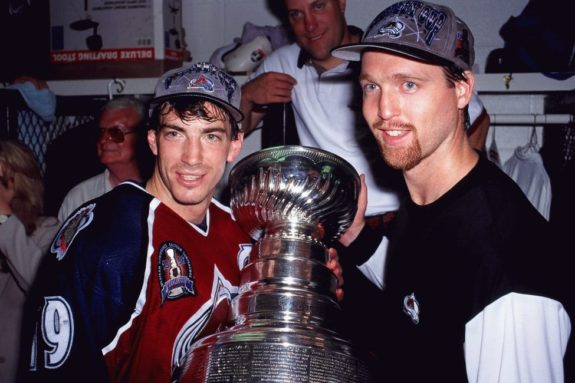
Their bad blood boiled over on December 2, 1995, when Tremblay left Roy in net for nine goals during an 11-1 home loss against the Detroit Red Wings. Upon his exit from the ice, Roy famously told Canadiens President Ronald Corey, “this is my last game for Montreal,” getting himself suspended by the team the following day and traded four days later to the Avalanche.
Related: Top 3 All-Time Canadiens Goalies
As if losing hometown hero Roy wasn’t enough, the Canadiens received a fairly paltry return for Roy and then-captain Mike Keane. The trade was always going to be judged on the value of the netminder Montreal received. A 1993 first-round draft pick, Jocelyn Thibault was the Avalanche’s starting goalie to begin the 1995-96 season. He didn’t have much NHL experience coming into that campaign – just 47 appearances across two seasons – but had a strong lockout-shortened 1994-95 for Colorado (12-2-2, 0.934 save percentage, 2.34 GAA).
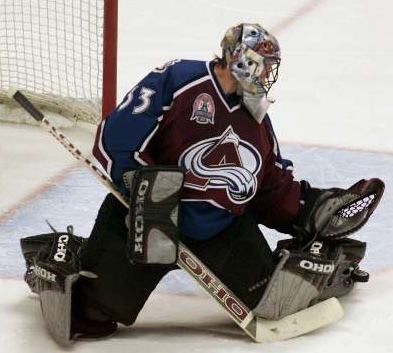
Unfortunately for Montreal, he never approached those numbers for the Canadiens. His best GAA was 2.47 (1997-98) and his best SV% was 0.913 (1995-96) for the Habs. Thibault played parts of four seasons with Montreal, finishing with a 67-56-24 record. The rest of the Roy trade package for Montreal was serviceable, if unspectacular.
Latest THW Headlines
Rucinsky produced dividends right away as he scored over a point-per-game in 1995-96 for Montreal (60 points in 55 games), but then averaged in the mid-40-point range for the rest of his six seasons-plus tenure with the club. Kovalenko spent the rest of 1995-96 with the Canadiens then was traded to Edmonton in the offseason, retiring from the NHL after the 2000-01 season. Roy’s noteworthy Hall of Fame career speaks for itself and his acquisition was a major reason why the Colorado Avalanche won two Stanley Cups during his time in Denver.
Ray Bourque
Avalanche acquired D Ray Bourque and LW Dave Andreychuk; Boston Bruins acquired LW Brian Rolston, prospects D Martin Grenier and LW Samuel Pahlsson, and the Avalanche’s 1st-round pick in the 2000 NHL Entry Draft on March 6, 2000.
This was the deal that finally got Ray Bourque’s name on the Stanley Cup. However, that feat was not accomplished the season in which Bourque was traded to the Avalanche but the one following (2000-01). In 2000, the Avalanche lost Game 7 of the Western Conference Final to the Dallas Stars, showing Bourque that there was a real possibility of winning the Cup with the Avalanche. Bourque took one last shot, signing a one-year deal with the Avalanche with an option for a second less than three weeks after the season ended. Fast-forward 11 months and Bourque finally hoisted the Cup after 22 seasons and retired a champion.
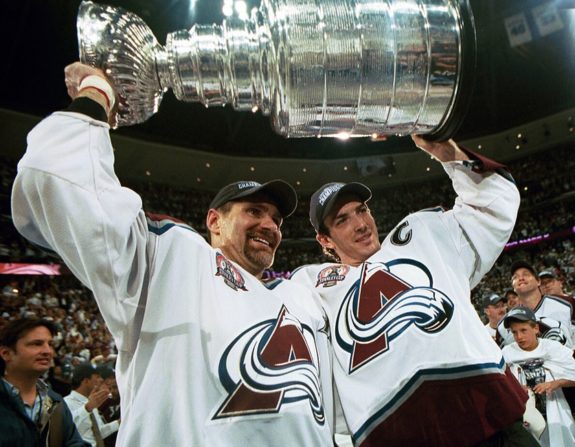
The Bruins made this trade to give Bourque the opportunity to win the Cup, but the team still received a pretty good return on an asset the NHL knew it was looking to unload. At the time, it was an impressive haul for what could have turned into just a partial season from Bourque had the Avalanche hoisted the Cup after the 2000 season.
Unfortunately for Bruins fans, Boston’s front office drafted even more poorly than the Avalanche did during 1999-2008 (the average Bruins draft pick scored 131 career points, 27th most in the NHL), and 2000 was no exception. The draftee Boston selected with Colorado’s first round pick – Martin Samuelsson – played a total of 14 NHL games.
You may also like:
- Colorado Avalanche Won’t Be Contenders This Season
- Colorado Avalanche Lineup Projection for 2024-25
- Avalanche Giving Nikolai Kovalenko a Chance to Prove Himself
- 3 Avalanche Players With the Most to Prove in 2024-25
- Peter “Foppa” Forsberg: A Biography
Rolston floundered in his time with the Avalanche, scoring 18 points in 50 games. He managed to turn in a little more than four strong seasons for the Bruins, averaging 56 points per season. None of the prospects acquired panned out in the NHL, and Andreychuk played just 14 games for the Avalanche before signing with the Buffalo Sabres before the 2000-01 season.
Claude Lemieux
Avalanche acquired LW Claude Lemieux; New Jersey Devils acquired RW Steve Thomas; New York Islanders acquired C Wendell Clark on October 3, 1995.
The Brawl. The Kris Draper hit. Claude Lemieux was as known for instigating a violent rivalry with the Detroit Red Wings as he was for his playoff leadership. He was an integral part of the Avalanche’s early franchise success in Colorado. The team won the Stanley Cup in his first season with the franchise (1995-96) and they won the division in each of the next four seasons (1996-97 to 1999-00). In 1996, Lemieux became the 10th NHL player to win the Cup in two consecutive seasons on a different team each time.

His tenacity and ability to get under the skin of opponents was a driving force in the fierce rivalry between the Avalanche and Red Wings in. He was traded back to the New Jersey Devils along with a smattering of conditional and swapped picks on November 3, 1999, for Rolston – who obviously became a key piece in the deal that brought Bourque to Colorado.
Related: Little-Known Facts About the Stanley Cup
Lemieux was the perfect acquisition to instigate this successful run, given that he won the Conn Smythe Trophy in leading the New Jersey Devils to the Stanley Cup in the season before he came to Colorado. He brought with him 136 playoff appearances and two Stanley Cup championships – a whopping 40 of those playoff games in just the previous two seasons with the Devils.
He was a very aggressive, goal-scoring power forward who was a heavy hitter along the boards. The Avalanche and Red Wings battled in the 1996 and 1997 Western Conference Finals and met again in the 1999 Divisional Round. Lemieux’s infamous check-from-behind against Kris Draper in the 1996 playoffs is still talked about more than two decades later. Darren McCarty cites that hit as the instigator for the long-time McCarty-Lemieux feud that fueled the Avalanche-Red Wings rivalry.
Point Shares (PS) is a metric that quantifies how a player’s even-strength play in the offensive and defensive zones translates into scoring. In the end, Lemieux’s production of 21.3 PS in just over four seasons with Avalanche compares very similarly to the past four seasons of Gabriel Landeskog (23.5 PS, including the shortened 2019-20 season).
Rob Blake
Avalanche acquired D Rob Blake and C Steve Reinprecht; LA Kings acquired LW Adam Deadmarsh, D Aaron Miller, and two Avalanche 1st-round picks in the 2001 & 2003 NHL Entry Draft on February 22, 2001.
In 2001, the Kings were unwilling to pay soon-to-be unrestricted free agent Rob Blake the reported $10 million-a-season contract for which he was looking. (from ‘Blake Traded to Avalanche,’ Los Angeles Times, 02/22/2001) At the trade deadline, they traded him and young third-line center Steve Reinprecht to the Avalanche for a package that primarily contained power forward and postseason dynamo Adam Deadmarsh, decent defenseman Aaron Miller, and two first-round picks (2001 and 2003).
Acquiring defenseman Rob Blake at the 2001 trade deadline solidified the Avalanche as the Stanley Cup front-runner heading into the playoffs. The team already had the best record in the NHL (38-12-9-2, 87 points) so the rich became richer with Blake. The Avalanche went on to win the 2001 Presidents’ Trophy, finishing the regular season with an NHL-best 118 points.
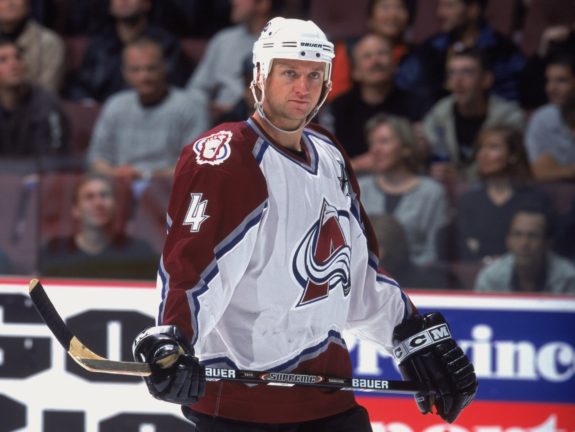
During the 2001 playoffs, the Avalanche paired Blake with Ray Bourque to form one of the best defensive tandems of all-time. The Avalanche beat the seven-seed Kings in the Western Conference Semifinals in seven games, with Blake contributing three goals and an assist in the series. All told, Blake scored 19 points in 23 postseason games, helping the Avalanche win their second Stanley Cup in five seasons.
The Avalanche then signed Blake to a five-year extension with an option for a sixth after the season on July 1, 2001. The two first-round picks would have been a hefty sum for the team to pay for just a postseason rental had they not come to terms with Blake. Fortunately for the Avalanche, winning a Stanley Cup has a way of keeping players on a team.
Blake racked up 40.6 PS in just over four seasons with the Avalanche, having lost a contractual season in 2004-05 due to the lockout. For reference, Nathan MacKinnon has accumulated 40.0 PS over the past four seasons (from 2018-22).
Nazem Kadri
Avalanche acquired C Nazem Kadri, D Calle Rosen, and a third-round pick in the 2020 NHL Entry Draft; Toronto Maple Leafs acquired C Alexander Kerfoot, D Tyson Barrie, and a sixth-round pick in the 2020 NHL Entry draft on July 1, 2019.
Looking to add depth at center, and concerned they wouldn’t be able to afford Tyson Barrie’s next contract extension, Colorado made a move that would be integral in getting the franchise its third Stanley Cup. The Maple Leafs were looking for a right-handed defenseman, and might have been interested in unloading Kadri after the volatile center got suspended in the playoffs two years in a row – both against the Boston Bruins.
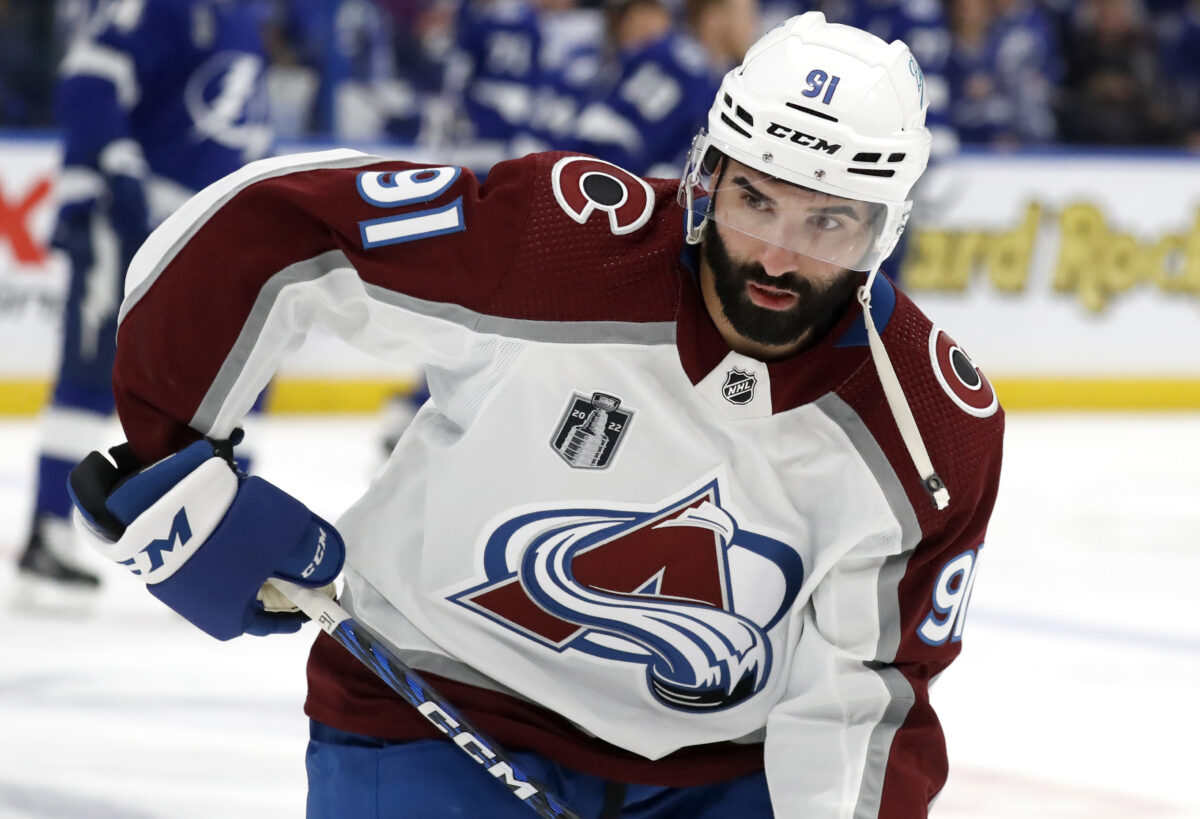
The deal was so-so for the Maple Leafs, but Kadri turned out to be a star for the Avalanche. In his three seasons in Colorado, he scored 58 goals and piled up 155 points. His 2021-22 campaign was the best of his career. Kadri scored 28 goals with 59 assists for 87 points. The assist and point totals were both career highs, and he was just four away from his career best in goals. He was also a dynamo in the playoffs. He scored seven goals and 15 points in 16 games. One of those goals was the crucial, game-winning overtime goal in Game 4 of the Stanley Cup Finals – which came in Kadri’s first game back from injury.
Related Pages: Brett Hull Wrong to Call Flames’ Nazem Kadri an Idiot
Kerfoot didn’t come close to matching Kadri’s production or team success. He had the best season of his career in 2021-22, notching 38 assists on the way to 51 points – both career highs – while playing in all 82 games. However. He couldn’t eclipse 30 points in his first two seasons with the club. Notoriously, the Maple Leafs have continued their postseason drought while Kerfoot has been there. He has two goals and nine assists in 19 playoff games with Toronto, but the Maple Leafs have failed to win a series.
Barrie wound up playing for the Maple Leafs for only one season – the 2019-20 campaign where he managed 39 points in 70 games. That was the third-lowest scoring season of Barrie’s career, counting seasons where he played at least 64 games. After his lone year in Toronto, Barrie signed with the Edmonton Oilers in free agency, and is currently in the second season of a three-year deal with the team. He hasn’t hit 50 points in a season since leaving Colorado.
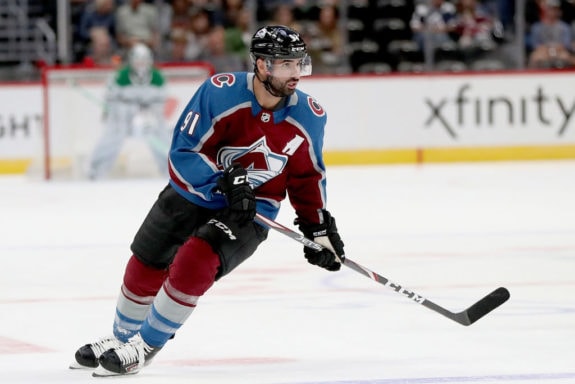
Rosen was the other piece that came to the Avalanche in the deal. He lasted just eight games in Colorado before the team traded him back to Toronto in February of 2020. The Avs got goaltender Michael Hutchinson in that trade, as the health of regular netminders Philipp Grubauer and Pavel Francouz became a concern. Hutchinson played just one regular-season game, but played in four postseason games in 2019-20. He went back into free agency after that season and signed with, you guessed it, the Maple Leafs.
Oddly enough, the same plight that caused the Avalanche to trade Barrie came back around when Kadri’s contract was up. The center had played himself out of the Avalanche’s affordability, and Colorado was forced to let him go in free agency with MacKinnon’s contract extension looming. Kadri landed with the Calgary Flames, getting a lucrative seven-year deal.
Related: Avalanche Cup Runs Built By Timely Trades From Lacroix
Whether the general manager was Pierre Lacroix or Joe Sakic, those Cup-winning teams weren’t afraid to exchange important parts of their current squads to go out and get remarkable talent. The likes of Roy, Bourque and Blake were all in the midst of Hall of Fame careers, while Lemieux and Kadri had some of the best seasons of their careers with the Avs. The Avalanche have made many trades in their storied history, but one common thread between all of these was that each player Colorado acquired provided a major contribution to the team hoisting the Stanley Cup.
